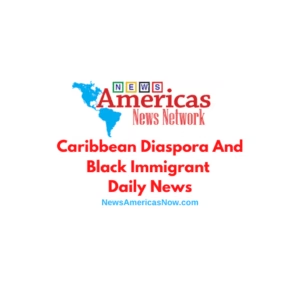
By NAN Staff Writer
News Americas, NEW YORK, NY, Fri. June 30, 2017: Today marks the end of another National Caribbean American Heritage Month and this week the US Census released some pertinent facts on three of the largest Caribbean groups in the US based on their latest American Community Survey (ACS). Here are 10 facts you should know about the ancestry of Caribbean immigrants from Jamaica, Haiti and Trinidad & Tobago who call the US home as we wrap up this CAHM:
1: The ACS estimated the number of people with Jamaican ancestry living in the US at around 998,000. It is the largest of any Caribbean group including Haitians and Trinidadians but the slowest growing, adding only about 744,000 people between 1980 and 2008–2012, an increase of only 294 percent.
2: Haitians on the other hand are the second largest Caribbean immigrant group but saw a whopping 862 percent growth between 2000 and 2012, moving up from an estimated 548,000 to 868,000 according to the recent data.
3: People from Trinidad and Tobago and those with T&T ancestry were put at an estimated 196,000, a growth from 165,000 in 2000, making them the third largest Caribbean group in the US.
4: People with Haitian ancestry are the most geographically concentrated of the three groups currently, with heavy concentrations in the states of Florida – 47 percent of the total U.S. Haitian population – and New York (22 percent of the U.S. total). There were lesser concentrations of people reporting Haitian ancestry in Massachusetts (8 percent), New Jersey (7 percent), and Georgia (3 percent).
5: The Jamaican and Trinidadian and Tobagonian ancestry groups followed a similar pattern, with high concentrations in Florida (26 percent of the U.S. Jamaican population, and 15 percent of the U.S. Trinidadian and Tobagonian population) and New York (31 percent of the Jamaican population and 46 percent of the Trinidadian and Tobagonian population).
6: Among the largest concentrations of the selected ancestry groups were the people with Jamaican ancestry in the New York metro area which was put at 330,944. Those with Haitian ancestry in the Miami metro area was put at 291,963. Those with Haitian ancestry in NYC was put at 226,294 while those with Jamaican ancestry in the Miami metro area was estimated at 167,208. Some 97,270 Trinidadian and Tobagonians are in New York.
7: There are also a higher proportions of Caribbean women who were never married among the three groups compared with the general population. Nationwide, the percentage of never-married females was 29 percent but it was as high as 37 percent for Trinidadian and Tobagonians, 35 percent for the Haitians and 33 percent for Jamaicans.
8: The foreign born of Jamaican ancestry were most likely to be naturalized US citizens at 61 percent followed by Trinidadian and Tobagonians at 56 percent. Those from T&T, however, are more likely to have degrees than the three groups with some 26 percent having a bachelor’s degree or higher compared to 25 percent for Jamaicans and 19 percent for Haitians.
9: At least 71 percent of people aged 16 and older with Haitian, Jamaican, and Trinidadian and Tobagonian ancestries are in the US work force in careers largely in management, business, science and the arts. Trinidad and Tobago nationals earned more money than the two other groups with the median income put at over USD 43,000 compared to USD 41,000 for Jamaicans and USD 33,000 for Haitians.
10: The homeownership rate among the three groups was highest for those with Jamaican ancestry at 54 percent.










